How to Clean a Clogged Drain: Tips and Tricks to Get Your Pipes Flowing Again
Cleaning a clogged drain can be a daunting task, but it is a necessary one. A clogged drain can lead to a variety of problems, including slow drainage, foul odors, and even water damage. Fortunately, with the right tools and techniques, you can easily clean your clogged drain and avoid these issues.
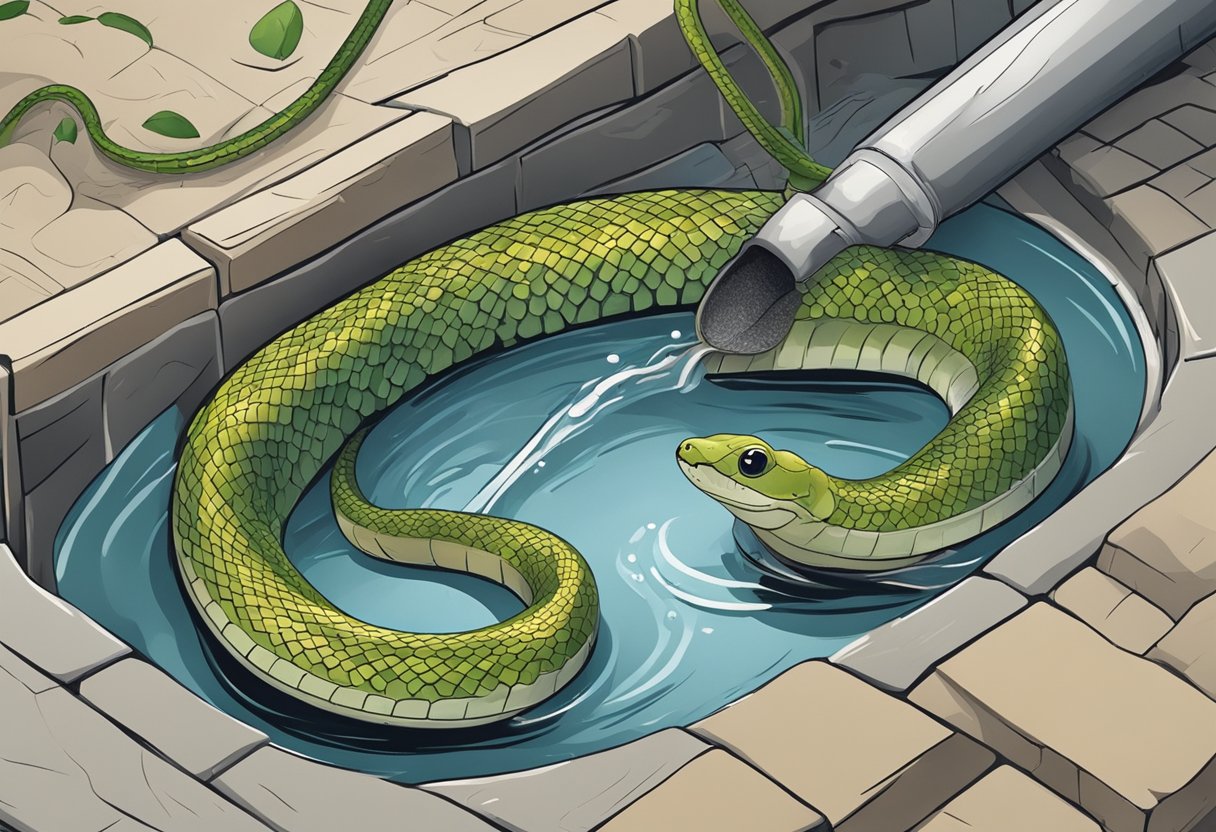
Understanding the cause of your clogged drain is the first step in cleaning it. Common causes of clogged drains include hair, grease, soap scum, food particles, and foreign objects. Once you have identified the cause of your clogged drain, you can select the appropriate tools and DIY solutions to clean it. In this article, I will guide you through the step-by-step process of cleaning a clogged drain, as well as provide tips for preventing future clogs and when to call a professional.
Key Takeaways
- Understanding the cause of your clogged drain is crucial in selecting the appropriate tools and DIY solutions for cleaning it.
- The step-by-step process of cleaning a clogged drain includes removing any visible debris, using a plunger or drain snake, and flushing the drain with hot water and/or vinegar and baking soda.
- Preventive measures such as using drain covers, disposing of waste properly, and regular maintenance can help avoid future clogs.
Understanding Clogged Drains
https://www.youtube.com/watch?v=LpDLynrXln8&embed=true
Dealing with a clogged drain can be a frustrating experience, but understanding what causes clogs can help prevent them from happening in the first place. Clogs typically occur when materials such as hair, food particles, grease, soap scum, and other debris accumulate in the drainpipes, causing a blockage.
The kitchen sink is a common area for clogs to occur due to the amount of food waste that goes down the drain. To prevent clogs in the kitchen, it’s important to avoid pouring grease or oil down the drain and to use a strainer to catch food particles.
Toilets can also become clogged, usually due to flushing items that should not be flushed, such as wipes, feminine hygiene products, and cotton balls. It’s important to only flush toilet paper and waste to prevent clogs.
Hair is a common culprit for clogs in bathtub and shower drains. To prevent hair clogs, use a drain strainer or cover to catch hair before it goes down the drain.
If you do experience a clogged drain, it’s important to address it as soon as possible to prevent further damage. There are several methods for unclogging drains, including using a plunger, drain snake, or chemical drain cleaner. However, it’s important to use caution and follow instructions carefully when using chemical drain cleaners, as they can be harmful to both you and your plumbing if used improperly.
By understanding what causes clogs and taking preventative measures, you can avoid the frustration and inconvenience of dealing with a clogged drain.
Common Causes of Clogged Drains
https://www.youtube.com/watch?v=Qrh9g2i63f4&embed=true
As a homeowner, I have dealt with my fair share of clogged drains. It’s frustrating to have water back up in the sink or shower, and it can be tempting to reach for a chemical drain cleaner. However, these cleaners can be harmful to pipes and the environment. Instead, I’ve learned to identify the common causes of clogged drains and take steps to prevent them.
One of the most common causes of clogged drains is grease and oil. When you pour grease down the drain, it can solidify and create a blockage. To prevent this, I always scrape leftover grease and oil into the trash before washing dishes. If you do have grease buildup in your pipes, you can try pouring boiling water down the drain or using a mixture of baking soda and vinegar.
Hair is another common culprit of clogged drains. In the bathroom, hair can accumulate in the shower or sink drain and create a blockage. To prevent this, I use a drain cover to catch hair before it goes down the drain. If you do have a clog caused by hair, you can try using a drain snake or plunger to remove it.
Debris such as food particles and fat can also cause clogs in the kitchen sink. I make sure to scrape food scraps into the trash before washing dishes and avoid pouring oil or fat down the drain. If you do have a clog caused by food particles or fat, you can try using a plunger or a mixture of baking soda and vinegar.
While it may seem obvious, toys and other objects can also cause clogs in drains. If you have young children, make sure to keep an eye on them during bath time to prevent toys from going down the drain. If you do have a clog caused by an object, you may need to call a professional plumber to remove it.
In summary, there are several common causes of clogged drains, including grease, oil, hair, debris, and objects. By taking steps to prevent these issues, you can avoid the frustration and expense of dealing with a clogged drain.
Tools Required for Cleaning Clogged Drains
https://www.youtube.com/watch?v=AiBPZKUNIDs&embed=true
When it comes to cleaning clogged drains, having the right tools on hand can make all the difference. Here are some of the tools that I find most useful:
Plunger
A plunger is a simple but effective tool for clearing clogs in sinks, toilets, and tubs. When using a plunger, make sure to create a tight seal around the drain and use a forceful, up-and-down motion to dislodge the clog.
Drain Snake
A drain snake, also known as a plumbing auger, is a flexible tool that can reach deep into pipes to break up and remove stubborn clogs. To use a drain snake, feed the wire into the drain and turn the handle to work the snake through the clog.
Bucket
A bucket is a handy tool to have on hand when cleaning clogged drains. It can be used to catch water and debris that may come out of the drain during the cleaning process.
P-Trap
The P-trap is a U-shaped pipe located beneath the sink that is designed to catch debris and prevent it from clogging the drain. If your sink is still clogged after using a plunger or drain snake, you may need to remove the P-trap to clear the blockage.
Strainer
A strainer is a small, mesh screen that fits over the drain in your sink or tub. It can help prevent hair, food, and other debris from going down the drain and causing clogs.
Drain Cleaner
If you’re dealing with a particularly stubborn clog, a drain cleaner may be necessary. There are both chemical and non-chemical drain cleaners available, so be sure to choose the one that is best suited for your needs.
Rubber Gloves
When cleaning clogged drains, it’s important to protect your hands from bacteria and other harmful substances. Rubber gloves are a simple but effective way to do this.
Flashlight
A flashlight can be a useful tool when cleaning clogged drains, as it can help you see deep into pipes and identify the source of the clog.
By having these tools on hand, you’ll be well-equipped to tackle even the toughest clogs and keep your drains running smoothly.
DIY Solutions for Cleaning Clogged Drains
https://www.youtube.com/watch?v=z13X3maPUAA&embed=true
When it comes to cleaning clogged drains, there are a few DIY solutions that you can try before calling in a professional. Here are some of the most effective methods that I have found:
Baking Soda and Vinegar
One of the most popular and effective methods for cleaning clogged drains is to use a combination of baking soda and vinegar. First, pour a pot of boiling water down the drain to loosen any debris. Then, pour 1/2 cup of baking soda down the drain, followed by 1/2 cup of vinegar. Cover the drain with a plug or rag and let the mixture sit for 5-10 minutes. Finally, pour another pot of boiling water down the drain to flush out the mixture and any remaining debris.
Hot Water and Dish Soap
If your drain is only partially clogged, you may be able to clear it using hot water and dish soap. First, remove any visible debris from the drain opening. Then, pour a pot of boiling water down the drain. Next, add a few tablespoons of dish soap to the drain and let it sit for 5-10 minutes. Finally, pour another pot of boiling water down the drain to flush out the soap and any remaining debris.
Salt and Hot Water
If your drain is clogged with grease or oil, you can try using salt and hot water to break it up. First, remove any visible debris from the drain opening. Then, pour a pot of boiling water down the drain. Next, add 1/2 cup of salt to the drain and let it sit for 5-10 minutes. Finally, pour another pot of boiling water down the drain to flush out the salt and any remaining grease or oil.
These DIY solutions are simple, effective, and can save you money on professional plumbing services. However, if these methods don’t work or if you have a serious clog, it’s always best to call in a professional plumber.
Step by Step Process to Clean a Clogged Drain
https://www.youtube.com/watch?v=d3t-PpxlpJ0&embed=true
I’ve had my fair share of dealing with clogged drains, and I know how frustrating it can be. Luckily, there are a few simple steps you can take to clear a clogged drain and get the water flowing again. Here’s my step by step process:
- Assess the situation: Before you start plunging away, take a moment to assess the situation. Is the clog in the sink, shower, or bathtub? Is the water draining slowly or not at all? Understanding the location and severity of the clog will help you determine the best course of action.
- Remove any visible blockages: If you can see a blockage in the drain, try to remove it. Use gloves or a tool to pull out any hair, soap scum, or other debris that may be causing the clog.
- Force the clog through: If the blockage is further down the drain, you’ll need to use some force to move it through. Start by filling the sink or tub with a few inches of water. Then, use a plunger to create suction and force the clog through the drain. Be sure to cover the overflow opening with a wet rag to prevent air from escaping.
- Flush with hot water: After you’ve cleared the clog, flush the drain with hot water. This will help to remove any remaining debris and ensure the drain is fully clear.
- Check the stopper: If you’re still having trouble with the drain, check the stopper. Sometimes, hair and other debris can get caught in the stopper mechanism, preventing it from opening and closing properly. Remove the stopper and clean it thoroughly before replacing it.
- Check the slip nut and trap arm: If the clog is still persisting, it may be located in the slip nut or trap arm. These are the curved pipes located under the sink that are designed to trap debris and prevent it from flowing further down the drain. Use a wrench to loosen the slip nut and remove the trap arm. Clean out any debris and reassemble the pipes.
- Use a thrust: If all else fails, you may need to use a thrust to clear the clog. A thrust is a long, flexible tool that can be inserted into the drain and used to push the clog through. Be sure to follow the manufacturer’s instructions carefully and use caution when handling the thrust.
By following these simple steps, you can clear most clogged drains and avoid the frustration of slow-moving water. Remember to take preventative measures, like using a drain screen, to help keep your drains clear in the future.
When to Call a Professional
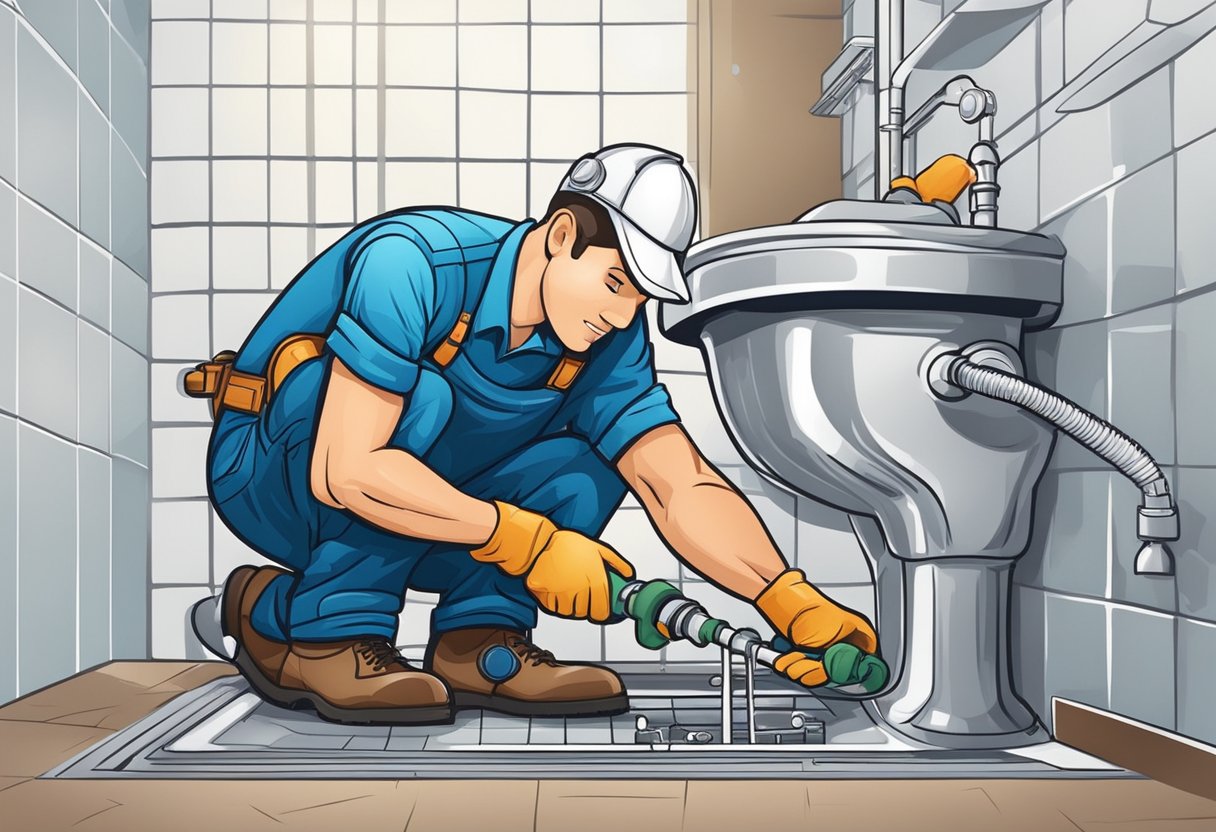
If you have tried all the DIY methods and still can’t seem to get rid of the clog, it might be time to call a professional. A licensed plumber has the experience and tools necessary to tackle even the toughest clogs.
It’s important to note that tough clogs can cause serious damage to your pipes if not handled properly. A professional plumber will be able to diagnose the problem and provide a solution that will not only fix the clog but also prevent any further damage to your plumbing system.
While it may be tempting to try and save money by fixing the clog yourself, it’s important to consider the potential costs of causing further damage to your pipes. In some cases, attempting to fix the clog yourself can actually end up costing you more money in the long run.
When considering whether to call a professional, it’s important to take into account the price of the service. While it may seem like a large expense upfront, it’s important to remember that a professional plumber will be able to provide a long-term solution that will save you money in the long run.
In summary, if you have tried all the DIY methods and still can’t seem to get rid of the clog, it’s time to call a professional. A licensed plumber will be able to diagnose the problem and provide a solution that will not only fix the clog but also prevent any further damage to your plumbing system. While it may seem like a large expense upfront, it’s important to remember that a professional plumber will be able to provide a long-term solution that will save you money in the long run.
Safety Measures While Cleaning Drains
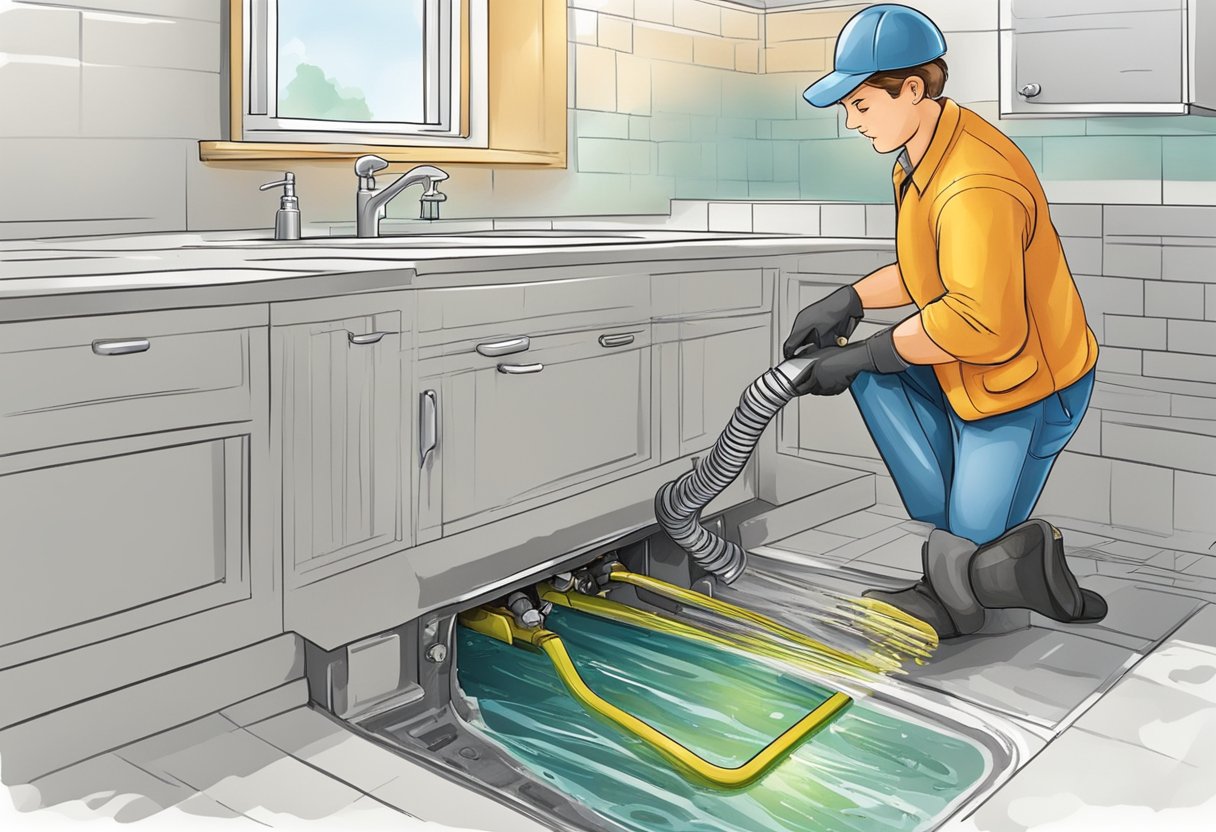
Cleaning a clogged drain can be a messy and potentially hazardous job. It is important to take proper safety measures to avoid any accidents or injuries. Here are some tips to keep in mind while cleaning a clogged drain:
- Wear rubber gloves to protect your hands from any harmful chemicals or bacteria that may be present in the drain. Gloves also provide a better grip while handling tools and equipment.
- Avoid using harsh chemicals such as drain cleaners without proper ventilation. These chemicals can release toxic fumes that can be harmful if inhaled. It is recommended to wear a mask or use a fan to ventilate the area while using these chemicals.
- Keep children and pets away from the area while cleaning a clogged drain. They may accidentally come in contact with the chemicals or equipment and get hurt.
- Use proper tools and equipment such as a plunger, drain snake or auger to clear the clog. Avoid using sharp objects such as knives or scissors as they can damage the pipes and cause leaks.
- If the clog is stubborn and cannot be cleared easily, it is recommended to seek professional help. Trying to force the clog can cause the pipes to burst or leak, resulting in costly repairs.
By following these safety measures, you can ensure a safe and effective cleaning of your clogged drain.
Preventive Measures to Avoid Clogged Drains
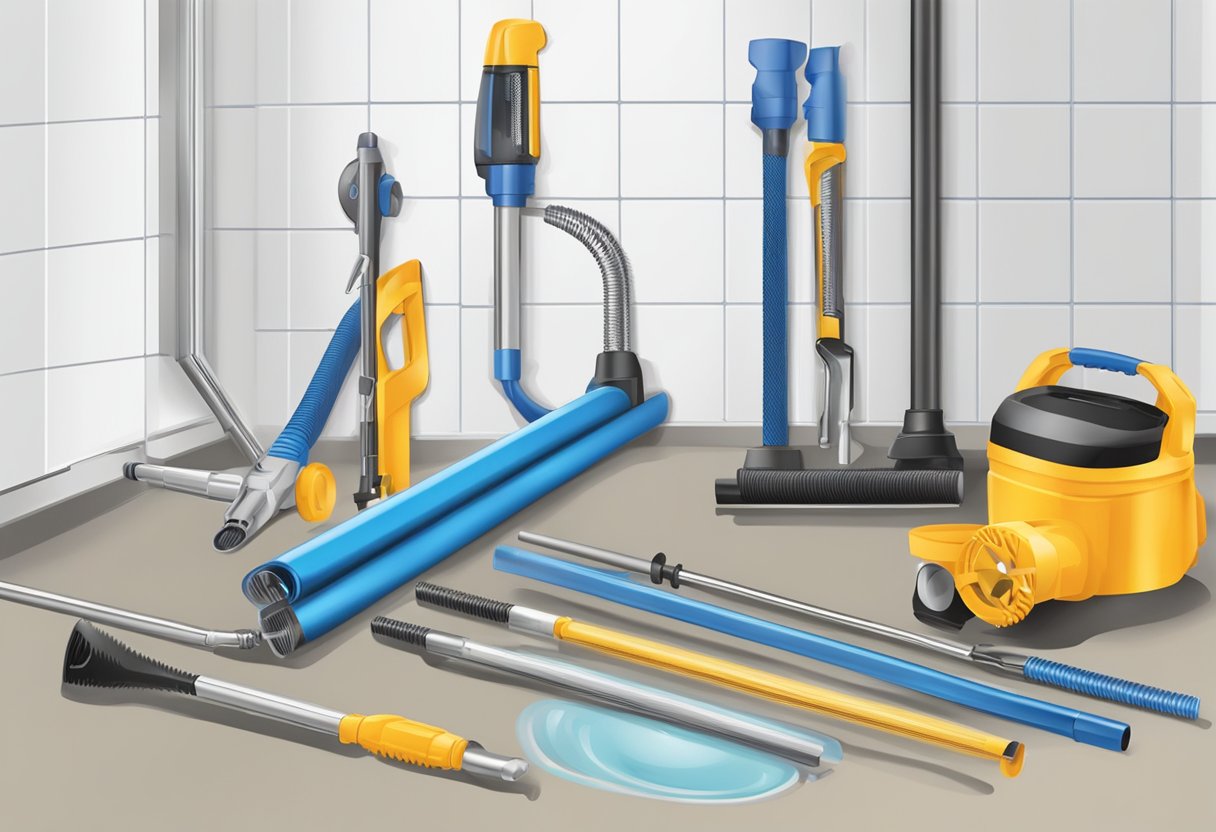
As someone who has dealt with many clogged drains over the years, I have learned that prevention is key. Here are some simple steps you can take to avoid clogged drains in your home:
1. Use a Strainer
One of the easiest ways to prevent clogs is to use a strainer in your sinks and shower drains. Strainers catch hair, food particles, and other debris before they can go down the drain and cause a blockage. Make sure to clean the strainer regularly to prevent buildup.
2. Dispose of Grease and Oil Properly
Never pour grease or oil down the drain. They can solidify and cause blockages in your pipes. Instead, pour them into a sealable container and throw them in the trash.
3. Scrape Food into the Trash
Avoid putting food particles down the drain. Even small bits of food can build up over time and cause a clog. Scrape your plates into the trash or compost bin before washing them.
4. Use Hot Water
Run hot water down the drain after each use to help flush away any debris that may have accumulated. This is especially important after washing dishes or cooking with oil.
5. Regular Maintenance
Regular maintenance can help prevent clogs before they happen. Consider scheduling a professional drain cleaning every year or so to keep your pipes in top shape.
By following these simple preventive measures, you can avoid the hassle and expense of dealing with clogged drains in your home.
Technology in Drain Cleaning
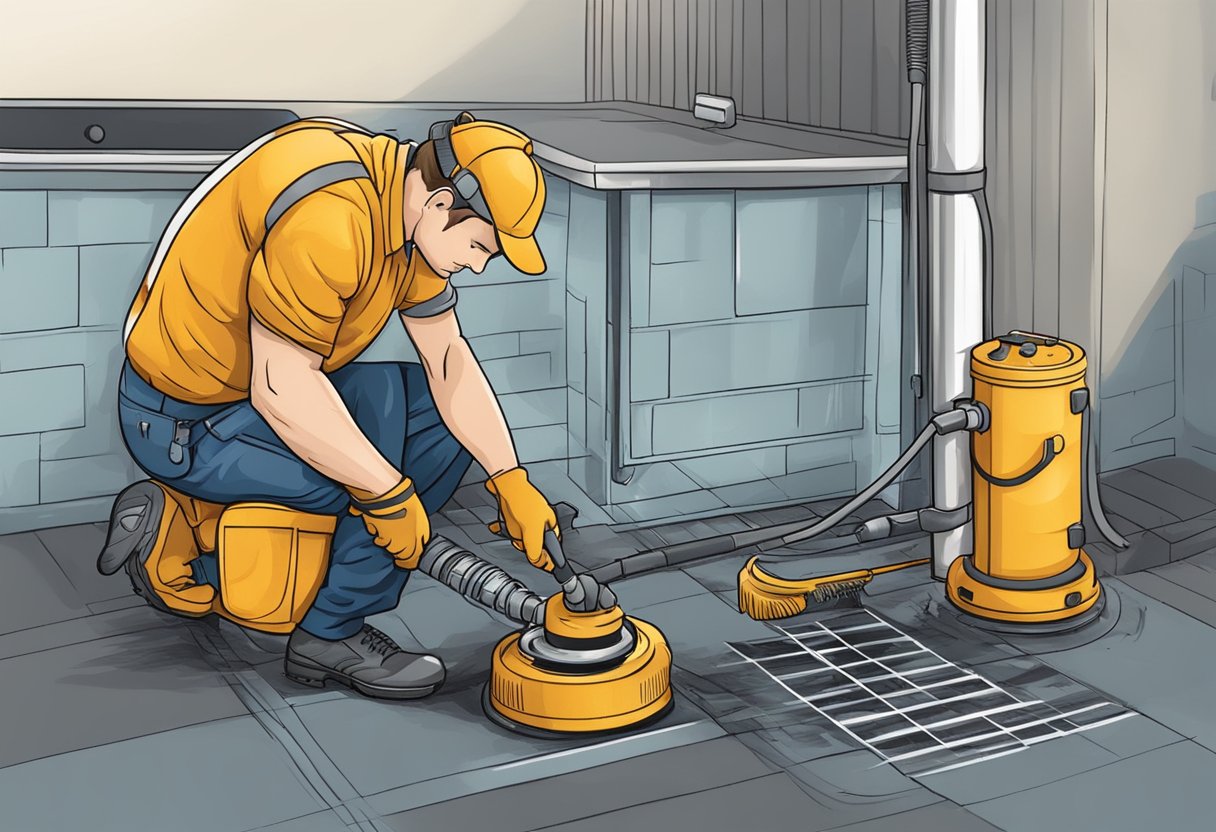
As a homeowner, I’ve dealt with my fair share of clogged drains. It’s a frustrating problem that can be difficult to solve. Luckily, advancements in technology have made it easier to clean drains and prevent clogs from happening in the first place.
One of the most exciting developments in drain cleaning technology is the use of video cameras. Plumbers can now use small cameras to inspect pipes and identify the source of a clog. This means they can pinpoint the exact location of the problem and avoid unnecessary digging or damage to your home. It’s a great way to save time and money.
Another useful technology is the garbage disposal. While not specifically designed for drain cleaning, garbage disposals can help prevent clogs by grinding up food waste before it goes down the drain. This is especially helpful in the kitchen where food scraps can easily accumulate and cause problems. Just be sure to use your garbage disposal properly and avoid putting anything down it that could cause damage.
Finally, there are a variety of tools and products available to help clean drains. High-pressure water jets can blast away clogs without the need for harsh chemicals. Drain snakes can be used to physically remove blockages. And enzymatic cleaners can break down organic matter that can cause clogs. It’s important to choose the right tool or product for the job and to use them safely and correctly.
In conclusion, technology has made it easier than ever to clean and maintain drains. From video cameras to garbage disposals to specialized tools and products, there are a variety of options available to homeowners. By staying informed and using the right tools, you can keep your drains flowing smoothly and avoid frustrating clogs.
Frequently Asked Questions
What are the best products for unclogging a sink?
There are many products available in the market that can help you unclog a sink. Some of the best products include Drano Max Gel Clog Remover, Liquid-Plumr, and Green Gobbler Drain Clog Dissolver. These products are designed to dissolve hair, soap scum, and other debris that might be clogging your sink.
What is the most effective drain cleaner?
The most effective drain cleaner depends on the type of clog you have. For example, if you have a hair clog, you might want to use a product like Liquid-Plumr Hair Clog Eliminator. If you have a grease clog, you might want to use a product like Green Gobbler Drain Clog Dissolver. If you’re not sure what type of clog you have, you can try a product like Drano Max Gel Clog Remover, which is designed to dissolve a variety of clogs.
How can I clear a clogged tub drain?
To clear a clogged tub drain, you can try using a plunger or a drain snake. If the clog is caused by hair, you can remove the stopper or strainer and clean out the hair with a drain stick. You can also try pouring boiling water down the drain to dissolve the clog.
What is a good home remedy for a hair-clogged drain?
One good home remedy for a hair-clogged drain is a mixture of baking soda and vinegar. Pour one cup of baking soda down the drain, followed by one cup of vinegar. Let the mixture sit for about 30 minutes, then flush it down the drain with hot water. You can also try using a combination of salt, baking soda, and cream of tartar.
How do I unclog a drain without using baking soda and vinegar?
If you don’t want to use baking soda and vinegar, there are other methods you can try. For example, you can use a plunger, a drain snake, or a mixture of salt and hot water. You can also try using a commercial drain cleaner, but be sure to follow the instructions carefully and use the product in a well-ventilated area.
What is the best tool for clearing a clogged drain?
The best tool for clearing a clogged drain depends on the type of clog you have. For example, a plunger is a good tool for clearing a clog caused by hair or soap scum. A drain snake is a good tool for clearing a clog caused by an object that’s stuck in the drain. You can also try using a combination of tools, such as a plunger and a drain snake, to clear a stubborn clog.
